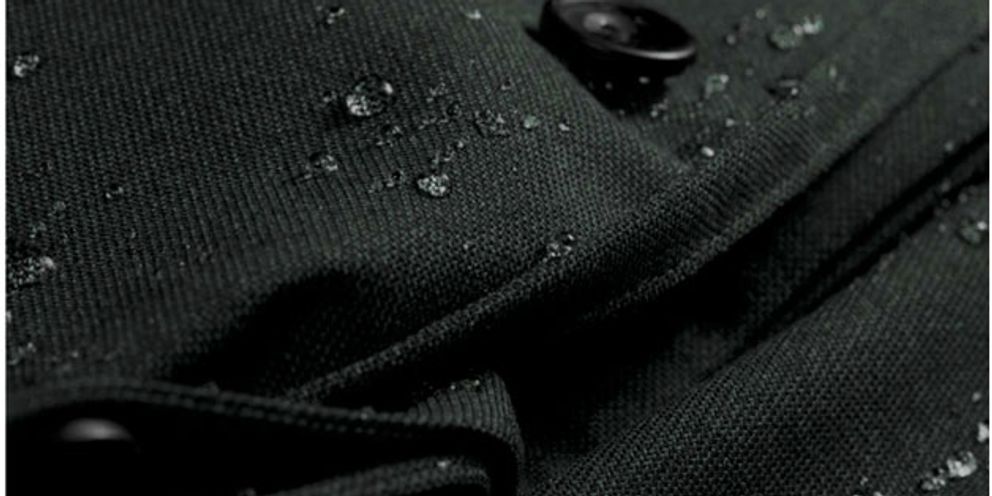
How to Waterproof Fabric
Image Credit: Norwegian Rain [CC BY-SA 4.0 ]
Not every fabric is water-repellent—but it can be!
Written By John Linden
It’s summer and you want to be out in the good weather while it lasts, but what do you do if you’re surprised by the rain? Thankfully you don’t need to go out to buy a whole new set of rain-ready outdoor furniture, you can waterproof fabric from the comfort of your own home, and make sure that favourite jacket is fine to wear whatever the weather. Have a look at these easy methods for waterproofing fabric and try them out this summer.
Method 1: Protective sprays
Probably the simplest and quickest way to waterproof fabric is to buy water-repellent spray from your local hardware or outdoor shop. Many companies now offer water-repellent spray that you can apply directly to whatever fabric you want with minimal effort and maximum effect. Just make sure you’re outside or in a well-ventilated area before you spray away.
Image Credit: Picsues / Pixabay

Method 2: DIY
If don’t mind getting your hands a bit dirty, or if you want to save a little money, there are lots of ways to waterproof fabric yourself, using natural materials and homemade solutions.
Beeswax
Probably the oldest way of waterproofing fabric, this tried-and-tested way of repelling water has been used on boats and tents for hundreds of years. Even today companies like Barbour still use wax to seal their products, and you can too. Just so you know, beeswax may change the colour of the fabric, so test it out on a small section first.
- Start by heating a bar of natural beeswax, which you could do this with a heat gun, a hairdryer, or by leaving it out in the sun for a few minutes. Make sure you don’t melt it too much, as you want it to be able to handle the bar.
- Rub the beeswax into clean and dry fabric. Spread the wax around with your fingers if necessary, and make sure you’ve coated all the nooks and crannies.
- Once completely coated, heat the fabric to make sure the wax melts into it. The fabric should get darker. If any pools of wax come up, use your fingers to spread it evenly over all the fabric.
- Leave your fabric to set in a warm, dry place for at least 24 hours. If you notice a strong smell, leave it to air out before using it.
Linseed oil
Another natural product you can use to waterproof fabric is linseed oil. This is used to turn your fabric into ‘tincloth’, a name coined by American pioneers for how it makes regular fabrics super-resistant against stains and fire as well as water. As with beeswax, this may change the look and feel of the fabric.
- Stretch your fabric over a frame to make it taut, and secure it with clips. Again, make sure you’re in a well-ventilated area or outside.
- Using a paintbrush, coat your fabric in linseed oil. Use plenty of oil to make sure it really penetrates the fabric. You can also mix the oil with beeswax to make it extra sturdy; if you do, use equal parts oil to wax, melted together in a stove pot.
- Leave it for 30 minutes to make sure the oil combines fully with the fabric.
- Let the fabric dry for 24 hours in a warm, dry place. You may need a second coat at this point, test out the fabric to see if you’ve got the desired effect.
Washing powder and alum
A slightly more intensive process is using alum - aluminumpotassiumsulphate - to waterproof fabric. This chemical is used for waterproofing buildings and construction materials, so it’s certainly a hardy solution, but make sure you handle it carefully because it can be toxic. Definitely use protective clothing and goggles.
- In a large container, mix 450 grams of washing powder with 7.5 litres of hot water.
- Dunk your fabric in the water until it’s completely soaked up in water, then leave it to dry outside.
- In another large container, combine 250 grams of alum with 7.5 litres of hot water. Make sure the alum combines completely with the water.
- Soak your fabric in this solution for 2 hours. Use glass bottles to weigh it down so that it is completely submerged.
- Leave it out to dry again, making sure the fabric is hanging freely and not folded or creased.
These are a few ways to waterproof fabric, each of them easy ways to keep your tent, boat or favorite jacket water-free. Remember, nothing lasts forever; all of these methods will eventually wear off, but they should last you the season. Test them out this summer and let us know how they are!
Updated